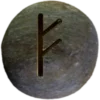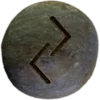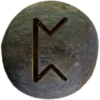Last Updated on December 5, 2024


Fólkvangr (FOHLK-vahng-er), meaning “Field of the Host” or “Field of the Army,” is the realm of the goddess Freyja. This place is described in the Prose Edda, written by Snorri Sturluson. Fólkvangr is where Freyja welcomes half of those who die in battle, sharing the chosen warriors with Odin, who takes the other half to Valhalla.
In Grímnismál, a poem from the Poetic Edda, Fólkvangr is mentioned as the domain where Freyja assigns seats to the warriors she selects. Sessrúmnir (SESS-roo-mneer), Freyja’s grand hall, serves as the gathering place for her warriors. Unlike the constant training and feasting in Valhalla, Fólkvangr emphasizes peace, beauty, and Freyja’s nurturing presence.
Fólkvangr reflects Freyja’s dual roles as a goddess of love and war. Warriors sent here experience a realm where bravery and compassion coexist. It shows that valor in life and care for others both hold immense value.
The fields of Fólkvangr are said to bloom endlessly, mirroring Freyja’s associations with fertility and nature. Warriors who dwell here find peace and harmony, resting after their battles. This contrast with Valhalla highlights the diverse paths available to the honored dead.
Frequent mentions of Fólkvangr in sagas and poems emphasize its importance. It underscores Freyja’s significance as a goddess capable of fierce loyalty and tender care. Fólkvangr’s inclusion in ancient writings ensures its lasting legacy.
Runes Associated with Fólkvangr
The Fehu (FAY-hoo) rune connects deeply to Fólkvangr through its themes of abundance, fertility, and prosperity. Freyja’s role as a goddess tied to these elements aligns perfectly with this Elder Futhark rune ![]() . Fehu represents the wealth of both the physical and spiritual realms, symbolizing the rewards of bravery and Freyja’s nurturing care. Warriors who enter Fólkvangr experience the abundance symbolized by Fehu.
. Fehu represents the wealth of both the physical and spiritual realms, symbolizing the rewards of bravery and Freyja’s nurturing care. Warriors who enter Fólkvangr experience the abundance symbolized by Fehu.
The Gebō (GHEH-boh) rune represents the balance of giving and receiving, an essential aspect of Fólkvangr’s purpose. Freyja’s act of welcoming warriors is a sacred gift, matched by the warriors’ courage and sacrifice in life. Gebō reflects this exchange, emphasizing the interconnectedness between divine generosity and human deeds. Together, these runes highlight the themes of harmony, reward, and mutual respect inherent in Fólkvangr’s existence.
Importance to Asatruar
Fólkvangr holds profound importance to Asatruar as a representation of Freyja’s values and qualities. It reminds followers that bravery on the battlefield must coexist with compassion and care. The realm emphasizes balance, teaching that strength and gentleness are equally vital to living well and dying with honor.
Asatruar often honor Freyja and Fólkvangr during rituals celebrating fertility, abundance, and renewal. These ceremonies reinforce the idea that warriors do not merely fight but also nurture and protect. Fólkvangr represents the rewards of living a life of both valor and generosity. Its beauty and peace inspire followers to strive for harmony in their daily lives.
Fólkvangr also encourages reflection on the diverse paths of the afterlife. It reminds Asatruar that every act of courage and kindness creates a legacy that outlives physical existence. For many, it offers an aspirational model of coexistence between opposing forces, embodying Freyja’s multifaceted nature.


